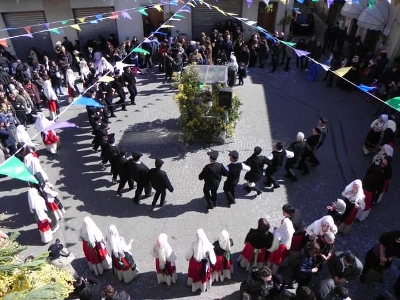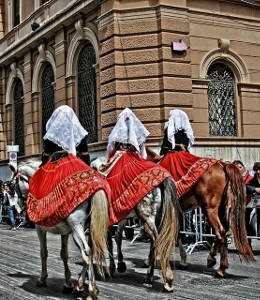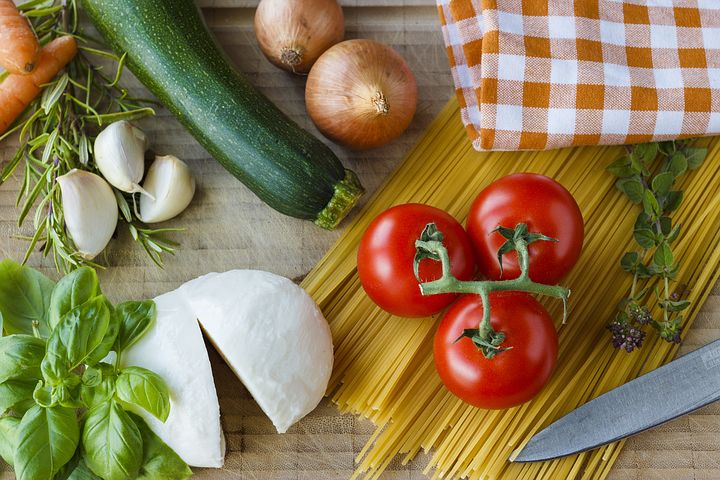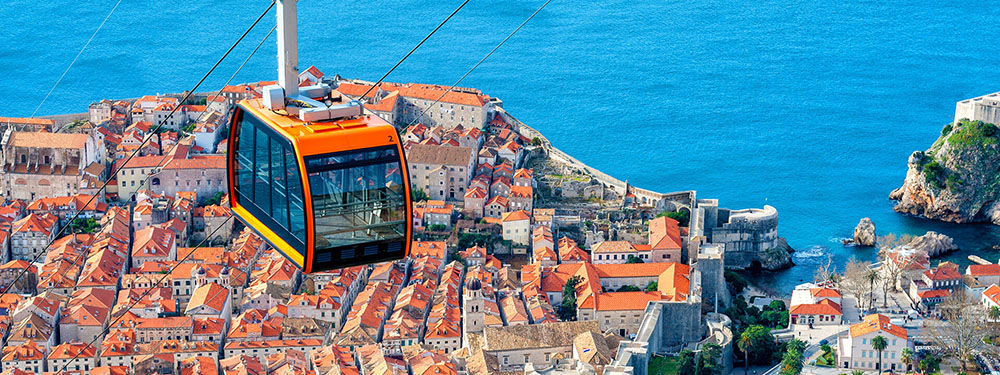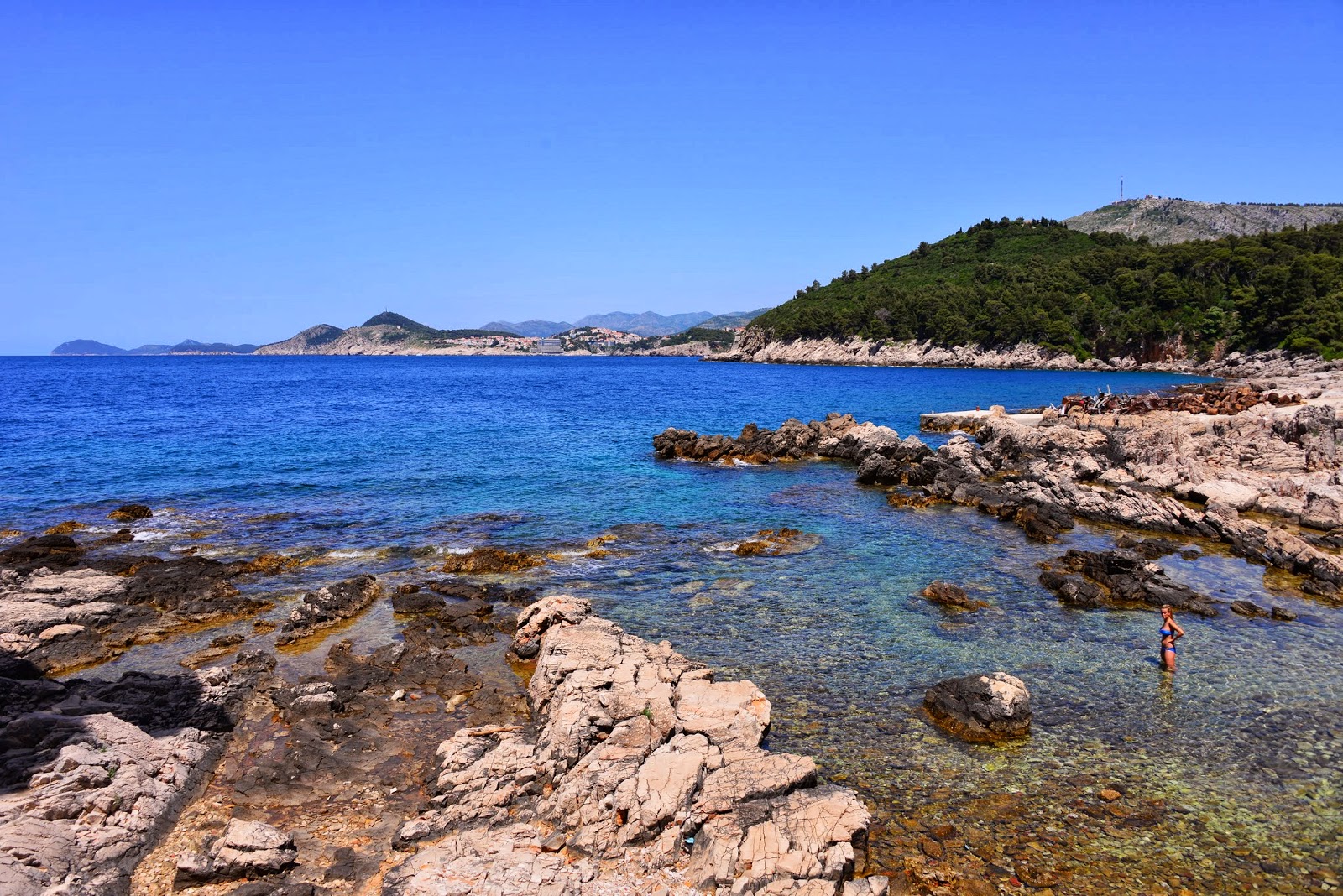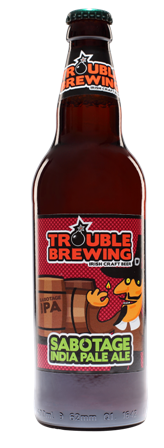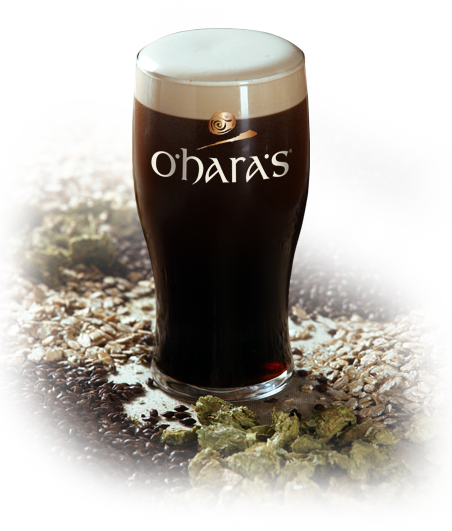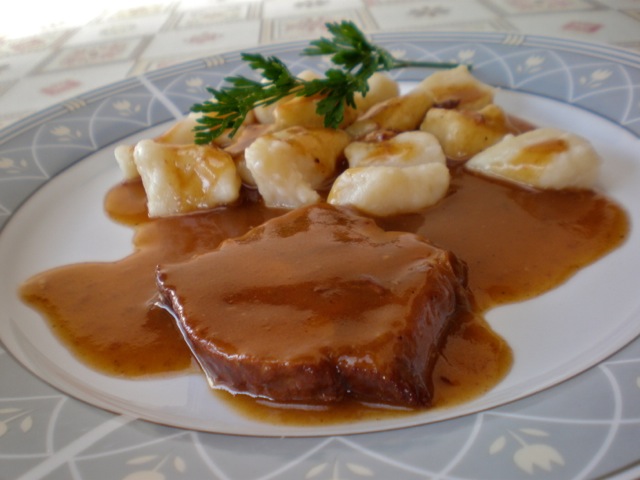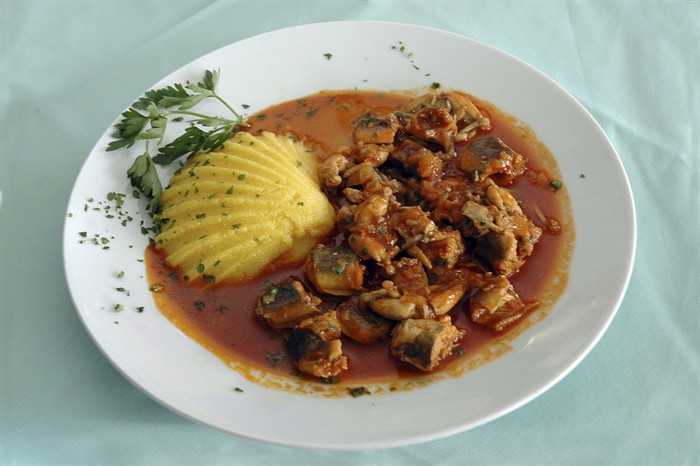The Year Of St. Blaise
According to legend, back in 972 AD, invading Venetians found themselves before the walls of the majestic city of Dubrovnik with the intention of conquering it overnight. However, their efforts stifled thanks to an apparition from St. Blaise to the then parish priest Stojko, subsequently the city was successfully defended and St. Blaise had become its official patron saint.
From then on churches dedicated to St. Blaise began to spring across the entire Dubrovnik region, reminding people of his background, contribution and most of all giving thanks for his intervention. Statues of St. Blaise were erected around Dubrovnik buildings, walls and gates. After Dubrovink had gained its independence in 1358, much emphasis was assigned to placing statues and replicas of the saint in public buildings and areas. The largest number of sculptures was placed around the ring of the city walls, which symbolically reinforced their protective role. Inside the city, statues were erected on administration buildings; his image had adorned many manuscripts, charters and sailing permits, but also appeared on money, seals and flags. St. Blaise's character was a reminder of commitment and responsibiltiy, the so called duty of any citizen and he was therefore placed on the first page of the Dubrovnik Statute as well as on the stamps used for labelling criminals. His image of sitting on a throne and sending his blessing was a unifying message of heavinly protection with that of justice and self-consciousness to the city's authorities.
St. Blaise the martyr is known in other regions of Croatia as Blaz, or sanctus Blasius in Latin. He was born in the town of Elaiussa Sebaste in former Armenia Minor that was ruled by Rome, and which is the present-day city of Sivas in central Turkey. The people and clergy elected him for bishop after the death of his predecessor. It is said that during the persecution of Christians, this bishop of Elaiussa Sebaste was hiding in the mountains of Cappadocia and chose a lonely and dark cave for his home from which he carefully went out only at night to share comfort and help tortured and unhappy Christians. God gave him power to become a friend of the wild beasts and they would bring him food, whilst he would heal them in return. By order of the then Roman governor Agricola, the Bishop was caught and convicted to the most serious suffering for not renouncing his faith, and was finally murdered in February of 317 AD.
The Feast Day of St. Blaise has been celebrated for over 1000 years and the City of Dubrovnik declared the year 2016 as the Year of St. Blaise, on the occasion of the 1700th anniversary since the martyrdom of the saint. It is also worth mentioning that the year 2016 also marked the 600th anniversary since the issuing of the abolition of slavery by the Great and General Counsel of the Dubrovnik Republic, which at the time was made up of 78 councillors and which on January 27 1416 was among the first in Europe and the world to legally prohibit the slave trade. 75 seats voted in favour and the proclamation came into force the day after, as soon as it was read out loud in the city's streets and squares.
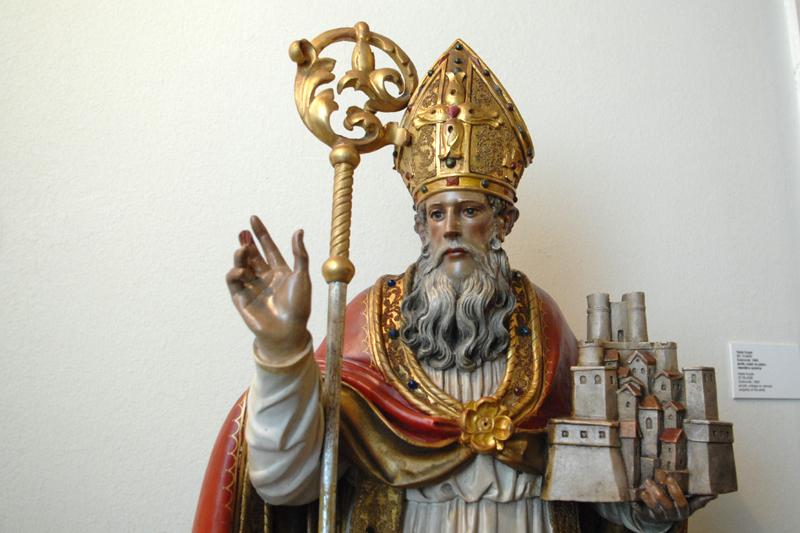
The Feast of St. Blaise has been a part of the UNESCO Intangible Heritage since 2009 and is celebrated in the heart of winter. It is the central winter event that is both unique and has remained unchanged for centuries. What can be seen at this gracious time? There is the evening candlelit mass, a procession through the streets of the city, feštanjuli is a ceremony marking the blessing of the organisers who ensure that tradition is upheld, the unveiling of banners, mimosa and its symbolic beginning of Spring and last but not least the feasting on šporki makaruli (a soucy meat pasta with century old tradition that leaves more on the chin then the mouth). All this makes the Dubrovnik Festivity as equally unique as St. Blaise himself.
Traditionally, the celebration begins with a Candlemass or Candelaria on the 2nd of February; white doves are released in front of the saint's church as a symbol of freedom and peace and the raising of St. Blaise's flag is held at Orlando's Pillar. Along with a church ceremony in Dubrovnik, a number of secular events are also organised during that period that are intended for residents and tourists alike. Restaurants offer typical winter specialities, exhibitions and concerts dedicated to St. Blaise are in abundance, and a walk through the city walls reveal more than one hundred stone statues of the patron saint.
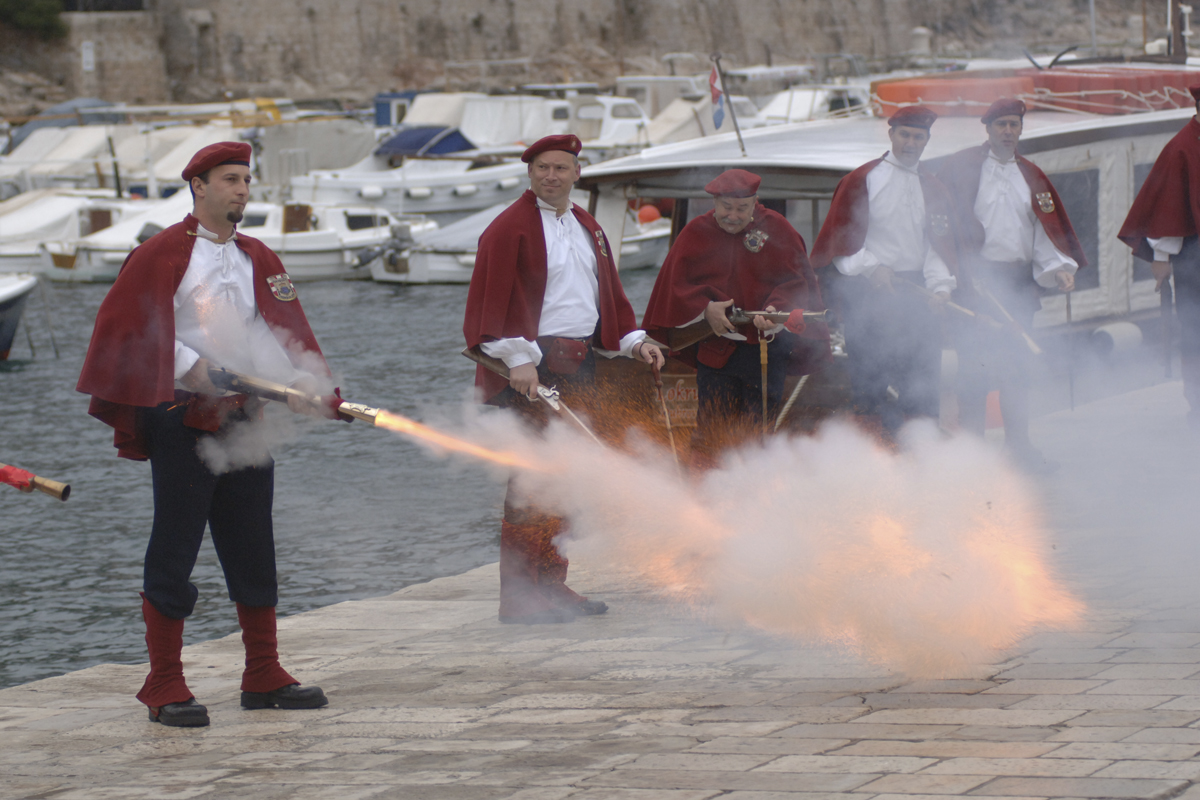
The Feast of St. Blaise brongs out the best of Dubrovnik, national costumes of Primorje, Zupa Dubrovacka or Konavle evoke the time of old costumes. Attention is drawn towards the colourful church banners and their fluttering on the square behind Orlando, as well as the group of trombunjeri in their eye-catching uniforms. The trombunjeri carry broad rifles on their sholders and their gun shots recall the old times when Dubrovnik residents used them to frighten potential enemies. They fire shots before entering the city, at the Brsalje which is where at the time of the Republic any shooting with rifles and cannons used to be practiced. It is only in the evening hours, when the City is covered in darkness and the saint's relics are resting in the treasury, do the village confraternities return home. Before the beautiful baroque entrance into the patron saint's Church one can see a green laurel wreath, stained-glass windows above the entrance doors which are surrounded with ornamented stone walls, and statues of St. Blaise which for centuries have been holding the model of the city in his arms as if to bring his heart and protective embrace to his beloved city and its town folk.
For over a thousand years this grand Medical city which sits beneath the Srd Mountain has been celebrating the day of their patron saint with little change in custom and tradition. And it is true that Dubrovnik no longer has its Rector or grand nobility of yester year, but the beautiful stony Rectors Palace is still here, with the baroque Church of St. Blaise alongside it and the Baroque Cathedral, but most importantly the age-old commitment of its inhabitants to the patron saint.
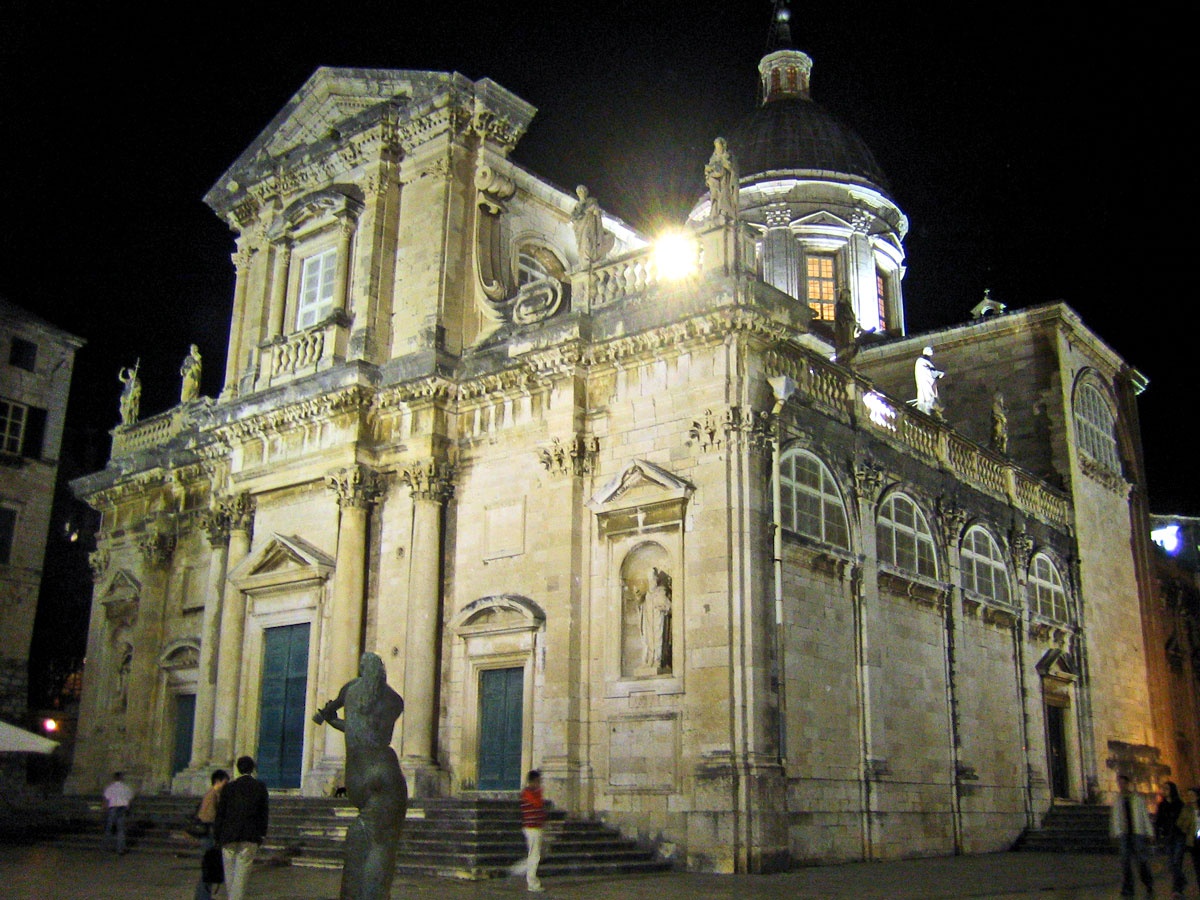
With their songs, hymns, lyrics, music and visual arts, Dubrovnik inhabitants honoured their patron saint throughout the year 2016, by way of religious and secular programmes. The completely renovated interior of the Church of St. Blaise was another important contribution to the celebration of the great anniversary. Finally, as St. Blaise is revered not only in Europe but throughout the world, the city went all out in commemorating this gentle and cirtuous bishop who had a gentle and harmonious soul. A true defender of Dubrovnik in all its hardships, whose sanctity is celebrated, whose impact has touched the lives of generations past and present, and whose impact has been felt on the overall life of the City of Dubrovnik.
